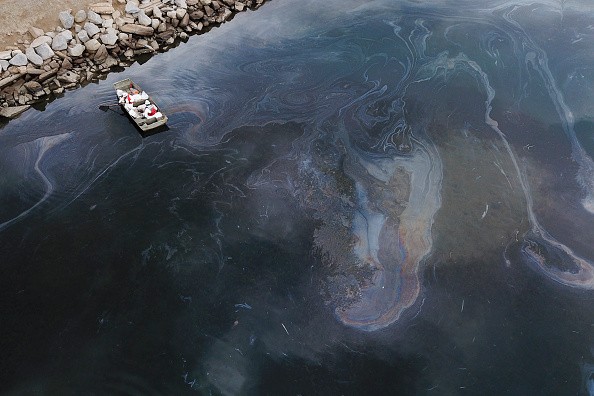According to authorities, a boat carrying drums of diesel gasoline drowned near one of Ecuador's environmentally fragile Galapagos Islands.
Damage Report
According to Ecuador's Environment Ministry and state-run oil firm Petroecuador, the spilled petroleum produced a "superficial" slick, but the damage was minor, and no one was injured.
Petroecuador was the first to notify the sinking on Saturday but did not say how much spilled petroleum.
According to park officials, Galapagos National Park verified the sinking of its vessel, the Albatroz, which was utilized for scuba diving tours in the islands' seas and carried 47 barrels of gasoline.
Containment Efforts
According to the corporation, containment booms have been placed up around the region to limit the spill. Tourism operations in the area of the national park's headquarters, Puerto Ayora, have been halted.
The ship's four crew members are all safe, according to Petroecuador.
Galapagos Islands

The Galapagos Islands are a protected wildlife region and home to rare types of flora and animals, located in the Pacific roughly 600 miles off the coast and noted for its gigantic tortoises.
Charles Darwin's discoveries about evolution in the archipelago made it renowned. The second-largest marine reserve globally, the Galapagos, is devoid of industrial fishing.
In the archipelago, which is a Natural World Heritage Site, more than 2,900 marine species have been recorded.
Also Read : Ecuador's 'Major' Oil Spill Cause Devastating Effects in River and Protected Amazon Area
Previous Spills
A barge carrying a tiny amount of diesel sank off another Galapagos island, San Cristobal, in 2019, producing a little leak and minor damage.
An Ecuadorian-flagged tanker carrying 240,000 gallons of petroleum drowned off the coast of San Cristobal in 2001. Several marine species were injured by the spill, which caused environmental damage.
How Deadly areSpills to the Ocean

Oil may poison or suffocate surface-dwelling animals and birds and alter buoyancy and natural waterproofing.
Fur-bearing animals, such as sea otters and the water repellency of a bird's feathers are both destroyed by oil, exposing these creatures to the elements. Birds and animals that cannot resist water and protect themselves from the cold will succumb to hypothermia.
Oil can also capture juvenile sea turtles, which mistake it for food. Oil may be inhaled by dolphins and whales, affecting their lungs, immunological function, and reproduction. When birds and animals try to clean themselves, they eat oil, which can poison them.
Animals may become malnourished or poisoned as a result of tainted food supply.
Fish, shellfish, and corals may not be exposed right away, but if oil is mixed into the water column, they may come into touch with it - shellfish can also be exposed in the intertidal zone. Adult fish exposed to oil may have stunted development, enlarged livers, altered heart and respiration rates, fin erosion, and reproductive problems. Fish eggs and larvae are particularly vulnerable to both fatal and sublethal effects. Even if no harmful effects are seen, oil can render fish and shellfish dangerous to eat for people.
Related Article : Environmental Agency Allegedly Told Staff to Ignore Reports on Low-Impact Pollution Due to Budgetary Reasons
For more news update about the Environment, don't forget to follow Nature World News!
© 2025 NatureWorldNews.com All rights reserved. Do not reproduce without permission.





